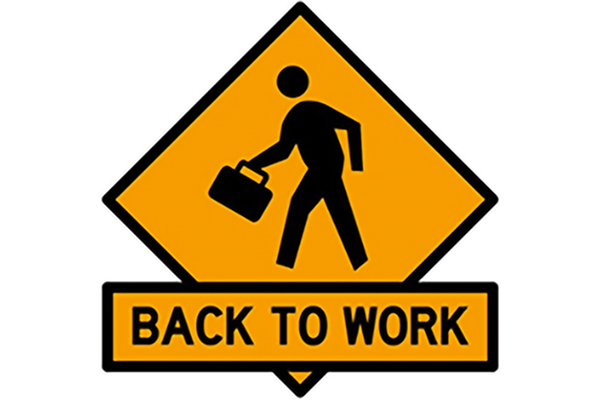
Written by CMSE Safety Consultant Collette Dunne
For those who are cautiously planning a return to offices and other workplaces in the coming months, it’s only natural to feel anxious and unsure of how to approach the transition back to what were once our familiar environments. You may be starting to think how can we return safely? This brief guide can help you plan and give you an idea of some of what needs to be considered based on current information.
We need to be mindful of public health information and guidance and take steps to reduce the risk of Covid transmission among employees.
So, how do we do that?
- The current advice is that anyone who can still work from home, should, until guidance in the next few weeks is issued from Government.
- Hybrid office/remote work: Many workplaces will formalise their remote working polices and have an option to either work remotely on a full time basis or use a hybrid office/remote work option. For some, this might mean shared spaces/hot desks. Employers should remember that the requirements of the General Application Regulations (Display Screen Equipment) apply in both cases and all workplaces should be assessed for each individual with suitable equipment provided. Furthermore, where hot-desking is replacing allocated desks, sanitising of equipment is essential. Department meetings or traditional Town Hall type meetings may still need to be remote as numbers in meeting rooms may still be restricted.
- Physical distancing: Continue to work in teams or pods for breaktimes to facilitate physical distancing in canteens and maintain physical distancing in work areas. Try to stagger people coming and going to avoid congestion in communal areas.
- Health of employees: Before returning to work, all employees should complete a Pre-Return to work questionnaire. Provide an induction for all returning workers outlining public health advice and information on what to do if you develop symptoms, points of contact etc.. Temperature checks or self-reporting of symptoms could be the norm as well – asking workers to keep a log of close contacts throughout the day. Social distancing and wearing a face covering are still recommended, along with good respiratory hygiene.
- Hygiene: Keeping the workplace clean and sanitised can reduce the spread of the virus. Reminders and encouragement to wash hands regularly and sanitise should still be displayed in all workplaces. Continue to ensure that hygiene facilities are in place. Be mindful that alcohol based sanitisers are flammable and must be stored safely, away from heat and naked flames. Bins used for disposal of tissues or disposable face coverings should have bags and be emptied at regular intervals.
- Ventilation: Examine your building and complete a risk assessment. Ventilation is key to reducing transmission and removing small droplets from the air. Keep windows open where possible. It is also worth checking what type of Heating, Ventilation, Air Conditioning (HVAC) system is in the office to see if it is safe to use. Recirculating air is just cooling air from inside the building and not taking in fresh air from outside. This means it’s mostly just the same air recirculating over and not clean, fresh air unless it is fitted with a HEPA filter (high efficiency particulate filter). Ensure the system is serviced by a competent person.
- Vaccination: Irrespective of vaccine status, face coverings, physical distancing, ventilation, hand hygiene etc. must still remain. Getting a vaccination, although recommended, is a personal choice. Information on a person’s vaccine status is considered special category data and needs to be processed under GDPR. Consultation may be needed between a worker, a medical practitioner and the employer to determine if it is safe for that worker to carry out tasks and if other controls are needed.
- Legionella: Build-up of bacteria in stagnant water systems is a risk if your building has been unoccupied or certain areas have not been used for a period of time. The water system may need to be flushed out and treated.
On a more personal level for employees and employers, looking after mental health shouldn’t just stop when people return. Some people may have found time to engage in hobbies, exercise or other activities while working from home or spent more time with immediate family or others they live with. With the shift back to the office, the commute could take that time back. Employees should be encouraged to look after their health holistically, keep up activities where possible and maintain a good work/life balance.
Further information is available on hse.ie, hsa.ie or if you would like to review your plans, please contact the CMSE Consultancy
Chat to us instantly by clicking the chat box in the bottom right-hand corner of your screen. Alternatively, you can click here to email info@cmse.ie
